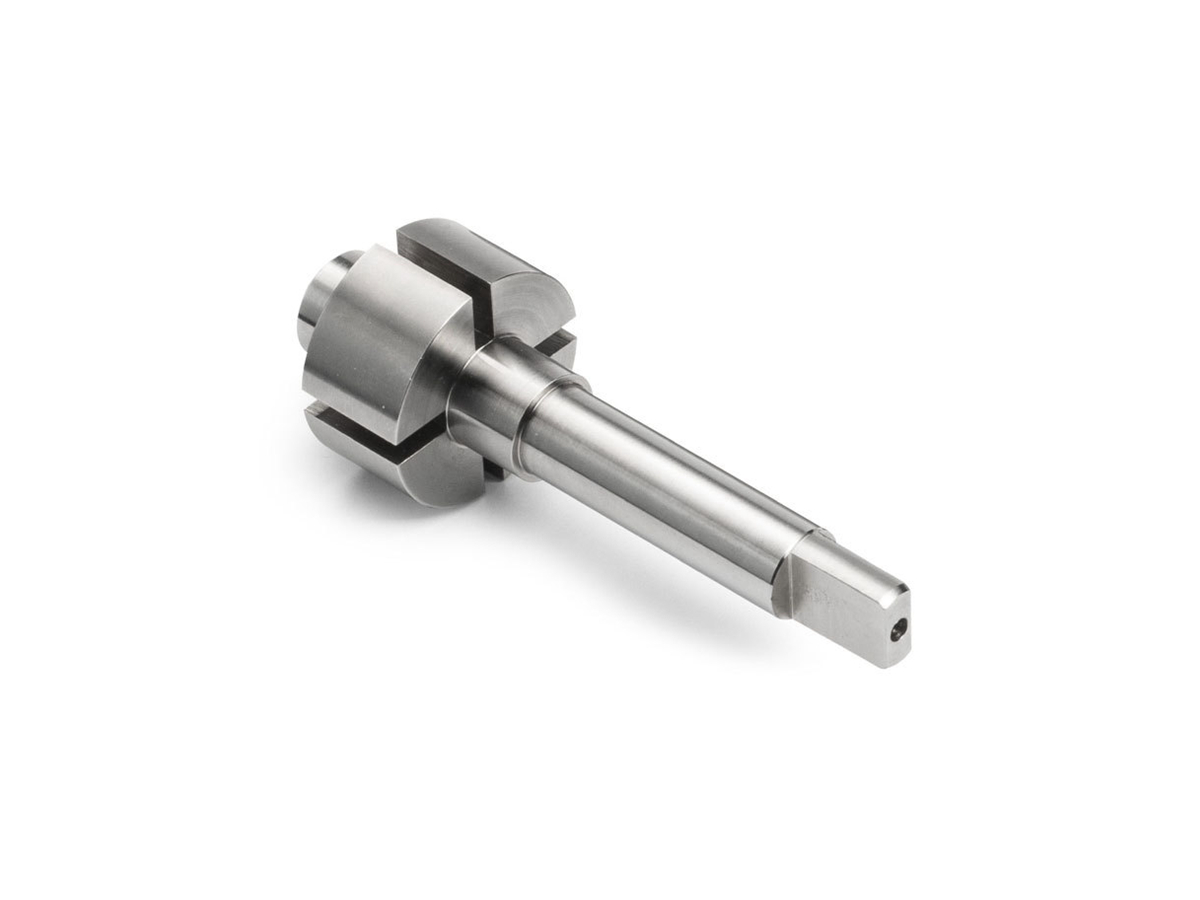Medical Device Manufacturing: Case Study on CNC Grinding Titanium for Implants
Precision Engineering for Biocompatible Implants
Titanium alloys dominate medical implants due to their exceptional biocompatibility, corrosion resistance, and osseointegration capabilities. CNC grinding services achieve ±0.001mm tolerances and Ra 0.05μm surface finishes on titanium components, critical for spinal fusion cages and dental implants. Over 85% of orthopedic implants utilize titanium, with Ti-6Al-4V ELI (Grade 23) accounting for 70% of applications.
The rise of patient-specific implants (PSIs) requires 5-axis CNC grinding to produce complex geometries like porous lattice structures, enhancing bone ingrowth by 40% while complying with FDA 21 CFR Part 820 and ISO 13485 standards.
Material Selection: Titanium Alloys for Medical Implants
Material | Key Metrics | Medical Applications | Limitations |
|---|---|---|---|
860 MPa UTS, 10% elongation | Spinal rods, hip stems | Requires electropolishing for Ra <0.2μm | |
900 MPa UTS, 15% elongation | Dental abutments, trauma plates | Higher vanadium-free production costs | |
550 MPa UTS, 20% elongation | Craniofacial implants | Lower strength than Ti-6Al-4V | |
1,000 MPa UTS, 0% magnetic susceptibility | MRI-compatible surgical tools | Complex heat treatment required |
Material Selection Protocol
Load-Bearing Orthopedic Implants
Rationale: Ti-6Al-4V ELI achieves 10⁷ fatigue cycles at 500 MPa stress, meeting ASTM F136 for hip replacements. Post-grinding anodizing enhances hydrophilicity for bone cell adhesion.
Validation: FDA requires <0.2μm Ra on articulating surfaces per ASTM F2129.
Dental Applications
Logic: Ti-6Al-7Nb (ISO 5832-11) eliminates vanadium concerns, achieving 28% higher corrosion resistance in saliva vs. Ti-6Al-4V.
CNC Grinding Process Optimization
Process | Technical Specifications | Medical Applications | Advantages |
|---|---|---|---|
0.001mm flatness, Ra 0.05μm | Bone plate contact surfaces | Eliminates post-process lapping | |
0.002mm roundness, 300mm max length | Dental implant abutments | Achieves 0.005mm/m taper | |
2-50mm bore, ±0.003mm diameter | Spinal screw channels | Maintains 0.01mm concentricity | |
3mm depth of cut, 0.5m/min feed | Porous titanium scaffolds | Reduces thermal distortion by 70% |
Process Strategy for Hip Implant Stems
Rough Grinding: Diamond wheels remove 0.8mm stock at 80 m/sec under cryogenic cooling.
Stress Relief: 750°C vacuum annealing (per AMS 2801) prevents residual stresses.
Finish Grinding: Electrolytic in-process dressing (ELID) achieves Ra 0.05μm.
Surface Treatment: Electropolishing removes the 15μm layer for biofilm resistance.
Surface Engineering: Enhancing Biocompatibility
Treatment | Technical Parameters | Medical Benefits | Standards |
|---|---|---|---|
Ra 0.05μm, 20μm material removal | Reduces bacterial adhesion by 90% | ASTM B912 | |
30-100nm nanotube layer | Enhances osteoblast proliferation | ISO 13779-2 | |
50μm pit depth, 20% porosity | Promotes bone ingrowth | ASTM F1580 | |
Nitric acid 35%, 30min immersion | Meets ISO 10993-5 cytotoxicity limits | ASTM A967 |
Coating Selection Logic
Dental Implants
Solution: Anodized Ti-6Al-4V with 80nm nanotubes increases bone-implant contact by 60% (vs. machined surfaces).
Trauma Screws
Method: Laser-textured CP Ti reduces bacterial colonization by 75% compared to smooth surfaces.
Quality Control: Medical Device Validation
Stage | Critical Parameters | Methodology | Equipment | Standards |
|---|---|---|---|---|
Biocompatibility | ISO 10993-5 cytotoxicity ≤Grade 1 | Extractables testing | FTIR, ICP-MS | ISO 10993 |
Dimensional Inspection | 0.005mm profile tolerance | White-light interferometry | Alicona InfiniteFocus G6 | ASME Y14.5 |
Surface Analysis | Ra ≤0.1μm, Sa ≤2.5μm | 3D profilometry | Bruker ContourGT-K | ISO 25178 |
Traceability | UDI code readability ≥Grade 4 | Laser contrast verification | Keyence IM-8000 | FDA 21 CFR Part 11 |
Certifications:
ISO 13485:2016 with 0.15μm Cpk for critical features.
FDA 510(k) cleared processes for Class II implants.
Industry Applications
Knee Implants: Ti-6Al-4V ELI femoral components + electropolishing (Ra 0.06μm).
Dental Abutments: Ti-6Al-7Nb + laser texturing (30μm roughness).
Spinal Cages: CP Ti Grade 4 + anodizing (100nm nanotube layer).
Conclusion
Precision medical CNC grinding services enable FDA/ISO-compliant titanium implants with 99.9% first-pass yield rates. Integrated one-stop manufacturing reduces time-to-market by 45% for custom orthopedic solutions.
FAQ
Why is Ti-6Al-4V ELI preferred for spinal implants?
How does electropolishing improve implant safety?
What certifications are required for dental abutments?
Can CNC grinding create porous titanium structures?
How to validate implant surface roughness?

